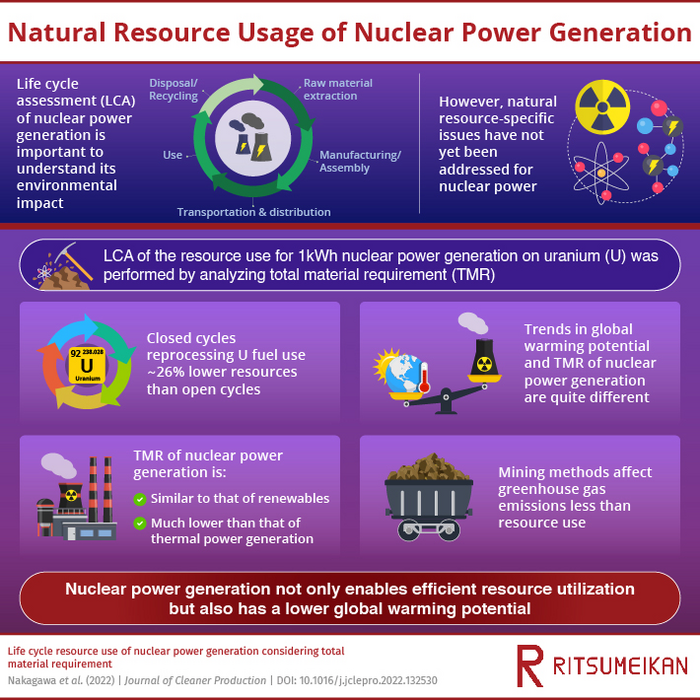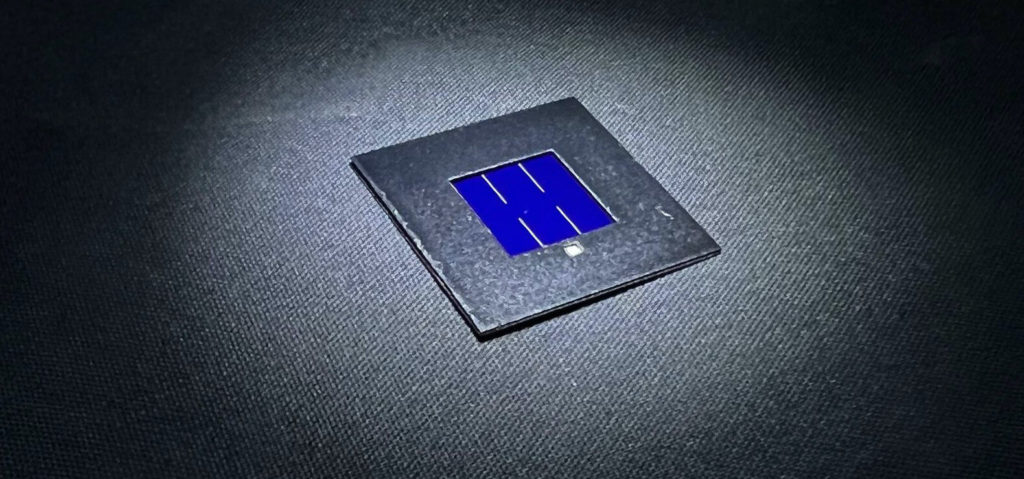The Trouble With Tariffs
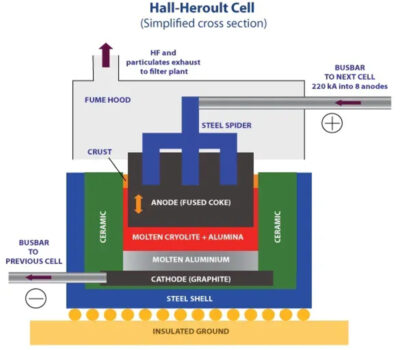

Sign up for daily news updates from CleanTechnica on email. Or follow us on Google News!
The Mouth That Roared — a/k/a the putative president of the United States — announced that he had a brain fart in the middle of the night and decided to put tariffs of 25% on all aluminum and steel imported into the US. The purpose of those tariffs, ostensibly, is to protect American aluminum and steel producers, but Houston, we have a problem. Thanks to 50 years of globalization, when it was considered smart business to offshore all manufacturing, the US aluminum and steel industries are a hollow shell of what they once were. In the 60s, the night sky over Pittsburgh was red from the glow of the furnaces in the steel mills. Today, most of the steel America uses is made somewhere else.
It’s all well and good to promote domestic industries. You can call it a matter of national security — a convenient shibboleth that gives people unfettered discretion to do anything they want behind a smokescreen of patriotic pandering. Or you can spin it as an anti-DEI measure, because heaven forefend that black and brown people catch a break from the systematic racism they have endured since the nation was formed. No matter how much lipstick you put on this pig, signing a piece of paper in the Offal Office won’t get any US-made aluminum or steel coming out of domestic factories for at least two to three years.
The prior administration had a plan to reinvigorate the American economy and promote domestic production, but it recognized that these things do not happen with the stroke of a Sharpie. It takes targeted policy initiatives that make the economics attractive to businesses and lenders. Those are actually the kind of market based policy initiatives conservatives used to advocate for, but today’s so-called conservatives think they don’t have to do the hard work. They just make wishes and their dreams come true, or so they think.
Tariffs!
Wars over tariffs are easy to win, the pompous, pontificating, potentate of Mar-A-Loco claims in his typical bellicose bluster, and he is right. The nations that used to be America’s allies will hit the US so hard with retaliatory tariffs that Americans will experience shock and awe as the cost of living explodes thanks to the thoughtless trade policies coming from Assington on the Potomac.
North of the border, Lloyd Alter posted on Substack recently that about two-thirds of primary aluminum comes from Canada, largely because there is plenty of cheap hydroelectric power in British Columbia and Québec. Aluminum has been described as “solid electricity” because it takes 13,500 to 17,000 kWh to make each ton of it. He explains that the US used to have lots of cheap hydro power. The Bonneville and Grand Coulee dams were built by Franklin Roosevelt to create jobs during the Depression, but the most important jobs they created were at Boeing and Douglas, which needed the aluminum for airplanes.
But while the population grew over the last 75 years, the number of dams didn’t. The price of electricity kept rising to the point where making aluminum in the USA simply wasn’t economically viable anymore. Writing in the Washington Post, Ana Swanson said, “In Washington state the smelters that used to operate near the hydroelectric power plants along the Columbia River have been priced out by the power hungry server farms of tech companies such as Microsoft.” So the companies moved their smelting to where power is cheap — to Iceland, which has lots of power and few people, and to Canada, where the aluminum companies actually built dams and the power plants for their own use. American aluminum production dropped by three-quarters over the last few decades, squeezed by expensive electricity and cheaper coal-fired Chinese aluminum.”
A Primer On How Aluminum Is Made
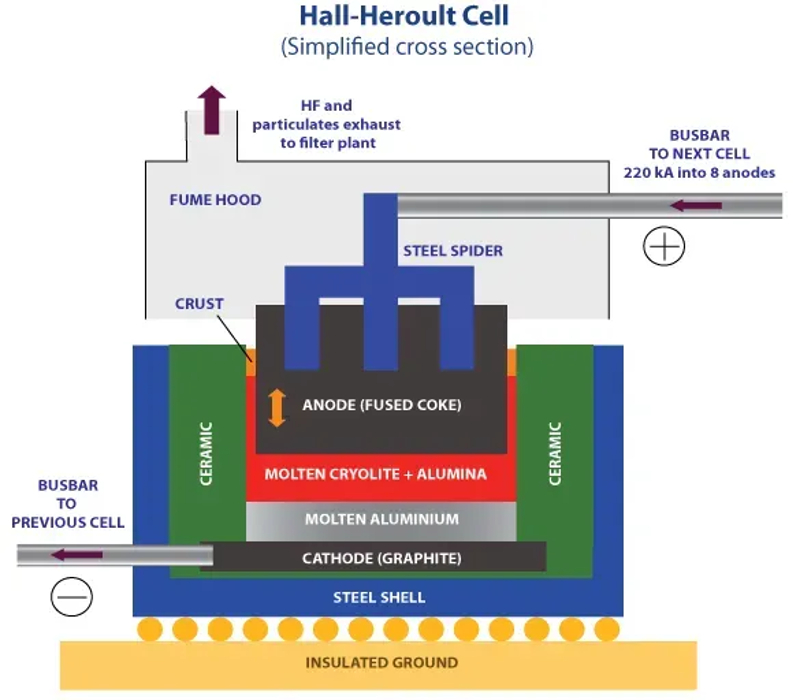
Alter provides an introduction into how aluminum is made. It’s something most people don’t know. We just assume when we need beer cans, baseball bats, or suspension pieces for automobiles, you just call up a supplier and it magically appears on the loading dock the next day, but there’s a little more to it than that. Aluminum starts with bauxite, a red ore that is strip-mined in Jamaica, Guinea, Russia, Malaysia, and Australia, as well as Brazil. It is processed onsite to separate out alumina, or aluminum oxide. The bond between the oxygen and aluminum is tight; in the Hall-Heroult process, the alumina is dissolved in cryolite, a mineral made of sodium aluminum fluoride that was found in Ivittuut, Greenland, and now synthesized. This mixture is zapped with an average of 13,496 kWh per tonne of aluminum, which causes the aluminum to sink to the bottom and the oxygen to bond with the carbon in the anode, creating carbon dioxide at a rate of 4 tonnes of CO2 for every ton of aluminum.
All that carbon dioxide is a problem for companies with carbon reduction plans, which is one reason many aluminum producers moved their operations to Canada. The source of the electricity used to make aluminum has a huge impact on how environmentally friendly it is. I was surprised to learn that just like hydrogen, there are various categories of aluminum depending on how it is made.
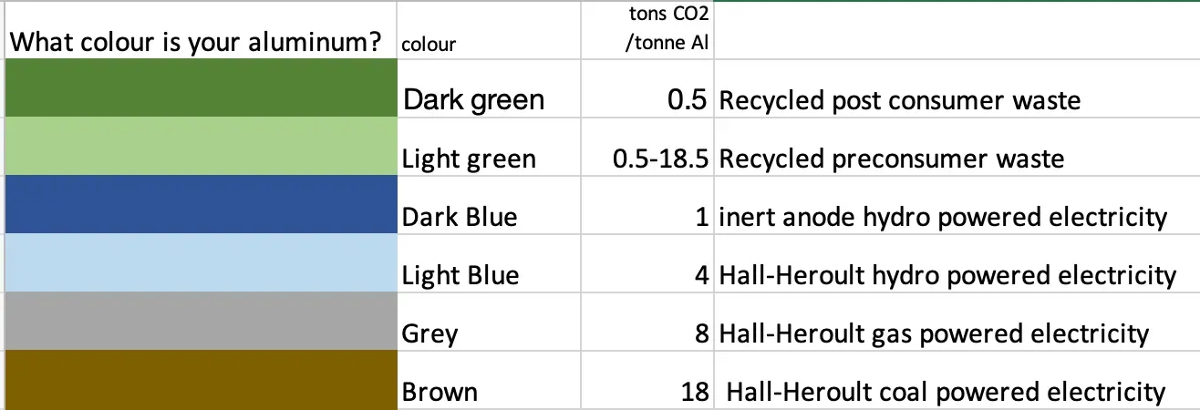
The biggest winner the last time tariffs were stuck on aluminum was Century Aluminum in Kentucky, which is coal-fired. Going from light blue Canadian aluminum to brown American aluminum means carbon dioxide emissions increase by 4.5 times. As luck would have it, I got an email yesterday from a press agent for Century Aluminum, saying it was in line for a major amount of funding from the Inflation Reduction Act to ramp up its production. Knowing the enmity the Muskrats have for government funding, I wished her well and asked her to get back in touch when and if the money ever got released.
But there’s more here than meets the eye. As Phil McKenna of Inside Climate News explains, there is an “anode effect” where, if the levels of alumina drop too low, flourine released from the cryolite reacts with the carbon in the anodes to make perfluorocarbons, which have global warming potentials of between 7380 and 12,400 times that of carbon dioxide.
“In 2021, the Sebree plant, the largest U.S. aluminum production facility operating at full capacity, vented 24 tons of perfluorocarbons into the air,” McKenna wrote. “The emissions equal the annual greenhouse gas emissions of 40,000 automobiles — ones that will remain on the theoretical road for tens of thousands of years. Meanwhile, a newer plant also owned and operated by Century Aluminum in Grundartangi, Iceland, emits just one sixth the perfluorocarbons emissions per ton of aluminum, as compared to the company’s Sebree plant. It’s a tale of two smelters — older US plants with some of the highest PFC emissions rates in the world and their overseas counterparts with far lower emissions, even when operated by the same multinational companies.”
The stable genius who is proclaiming all these new tariffs “would rather burn more coal and saddle his citizens with more expensive aluminum producing more CO2 and more perfluorocarbons,” Alter writes. “It won’t bother Apple, because aluminum is such a small part of its costs, but the price of a Ford F-150 pickup truck with the all aluminum cargo box just went up substantially. There’s not enough American aluminum for all the cars and trucks that use it. Airbus just got a nice gift as Boeing is now paying more. And your next can of beer will be a bit more expensive because there is going to be even more competition for recycled aluminum. You all know who to thank.”
And yet, millions of Americans are cheering because their guy is sticking it to their enemies with all these tariffs. It’s an equal opportunity campaign of hate, bile, and toxic grievances. So bend over, America, and take it like the good patriots you are. We can all feel proud knowing we will pay more so there is money for tax cuts for billionaires and corporations. Freedom’s just another word for nothing left to lose, and soon America will truly come to know what freedom truly feels like.
Chip in a few dollars a month to help support independent cleantech coverage that helps to accelerate the cleantech revolution!
Have a tip for CleanTechnica? Want to advertise? Want to suggest a guest for our CleanTech Talk podcast? Contact us here.
Sign up for our daily newsletter for 15 new cleantech stories a day. Or sign up for our weekly one if daily is too frequent.
CleanTechnica uses affiliate links. See our policy here.
CleanTechnica’s Comment Policy
This post has been syndicated from a third-party source. View the original article here.


